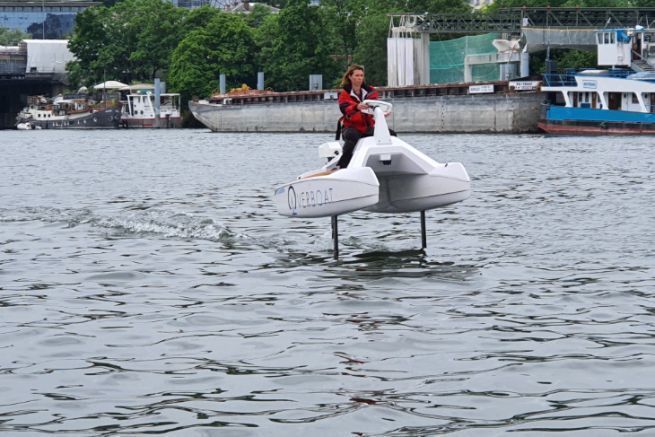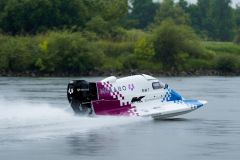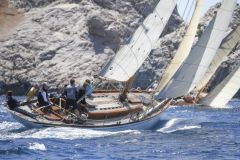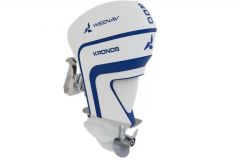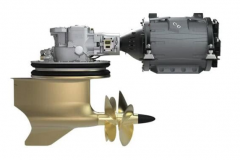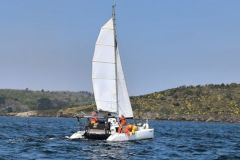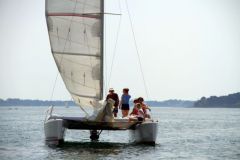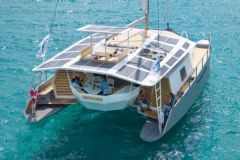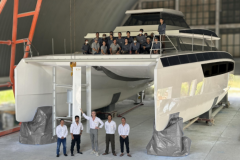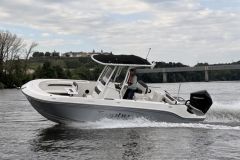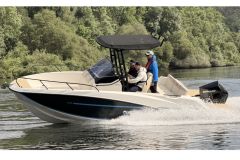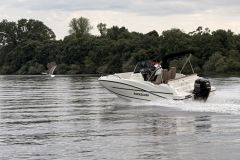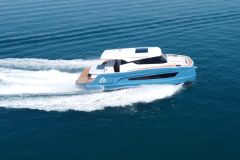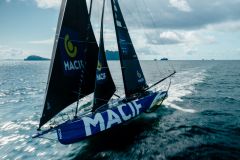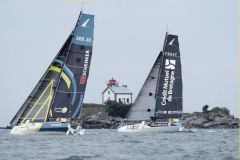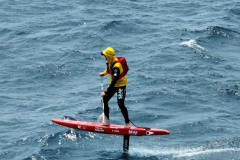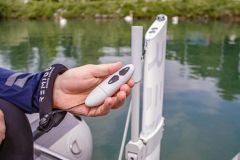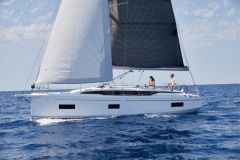A silent and flying electric catamaran
Flying on water with ease and especially in the greatest silence, this is what the company Néocean, founded by Vincent Dufour, proposes. This oceanographer has developed the Overboat in partnership with specialists from the laboratory of the University of Montpellier. It is a 3.1 m long electric catamaran equipped with T-shaped foils, capable of flying on the water at a speed of 8 knots.

"Besides the ecological impact - reduction of pollution and underwater noise - the Overboat is hyper pleasant and fun to drive. The foils allow both energy saving and provide entertainment to the yachtsman, with a maximum speed of around 15 knots" explains Vincent Dufour.
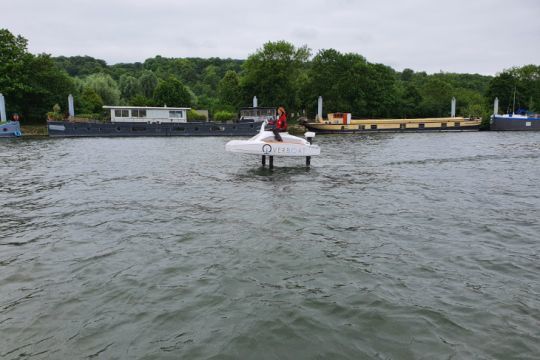
Easy to handle
Equipped with an electric motor with direct drive developed in-house (in France) of 4.5 kW, the Overboat does not require a license. Stable, we settle on board as on a jet-ski. The piloting is done via a steering wheel equipped with a screen on which are indicated all the navigation data (speed, battery, etc.). You just have to press the starboard trigger to accelerate and release it to decelerate! Nothing could be easier! Be careful, however, with the sensitivity of the steering wheel; avoid jerking and go for smoothness!
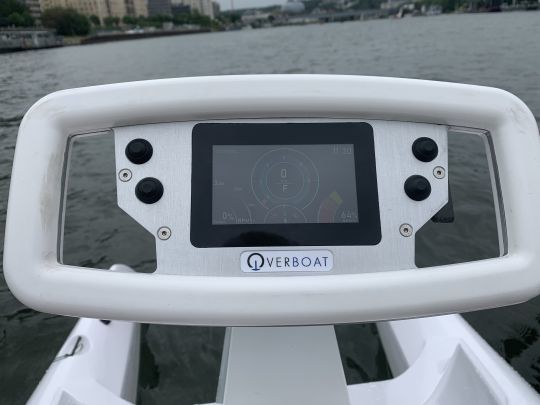
Flying without having to touch anything!
Thanks to a self-regulating system, the boat rises on its carbon foils as soon as it reaches a speed of 8 knots. The flight height is preset before the launch, from 10 cm - for shallow areas - to 0.70 cm - the maximum height and preset for our test. The foils are regulated 100 times per second thanks to the control electronics integrated in the boat. The ascent is done in two steps - a first level at 8 knots before taking its maximum height.
"The engine efficiency is 92% and the propeller efficiency is over 70% with a specially developed nozzle." says Vincent Dufour.
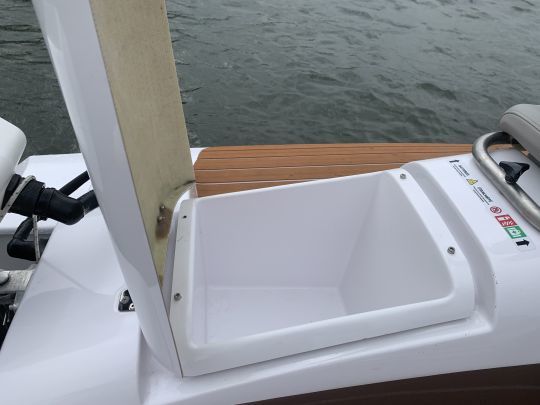
The handling is really intuitive and the pleasure of flying on the water magical! It's incredible how easily the boat glides along, without having to worry about adjusting the foil height. You just have to enjoy the navigation, to let yourself glide on the water while maintaining your course and speed. The silence of the electric motor reinforces the feeling of being on a magic carpet. The Overboat remains stable, even with choppy water, but also in turns at 12 knots, its cruising speed. The descent is also easy, by gradually releasing the trigger, so that the hulls come to slide again on the water. It even has a reverse gear, to facilitate maneuvers. The two front foils are easily raised, as well as the base for the engine and the rear support plane, for sailing in shallow waters.
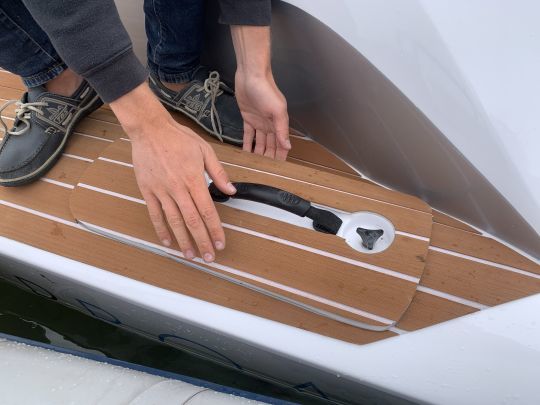
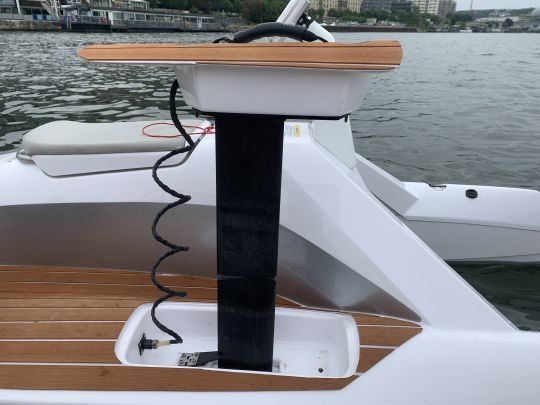
Easy to pilot, fun, the Overboat democratizes the use of foils for the general public. Initially designed as a drone, it can also be remotely controlled from a maximum distance of 3 km.
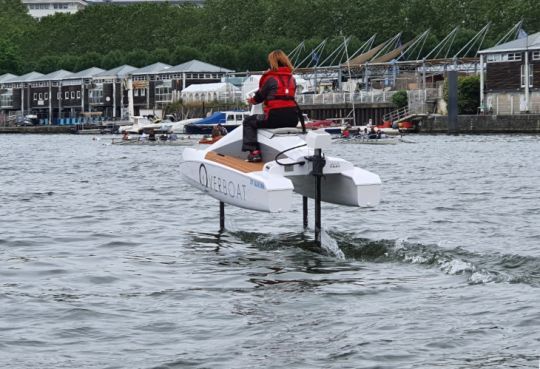
Transportable and quickly rechargeable
The Overboat weighs only 120 kg and can be easily transported on a trailer to go from port to port. Approved in category D, it is suitable for navigation on closed water as well as on the sea, even with chop. The manufacturer announces a consumption equivalent to ½ l of gasoline per hour for a boat with thermal engine.
It is equipped with 3 batteries 70 Ah of 48 volts which one comes to dislodge from the central cover to reload them on a mains plug. It is necessary to count 1 h 30 of recharging, and an autonomy of 2 h at the cruising speed of 11 knots.
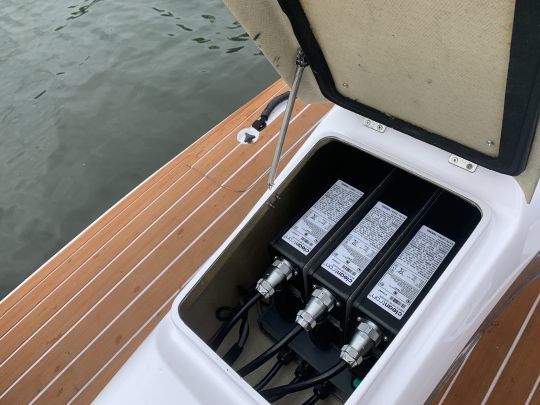
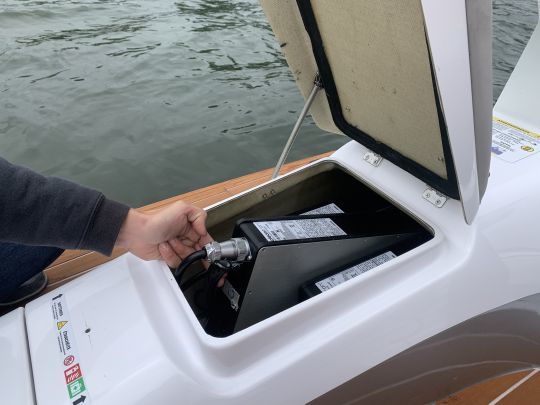
"The Overboat revisits the concept of a motor boat. It offers a regular speed thanks to the electric propulsion. As for the electrically controlled foils, they are the future of the motorboat", concludes Vincent Dufour.
Leisure and the professional world
Half a dozen Overboats have already been purchased by a nautical base dedicated to foils in Carnon, in the Hérault region. But its founder foresees other uses: sports federations, toys for superyachts, hotels, stealth craft for the army... A version without foils is also proposed to professionals.
Recreational and easy to use, the Overboat will seduce any yachtsman, as long as he can afford the 32,000 euros TTC (26,900 euros HT) that the boat costs. An expensive price justified by the technology and the French know-how used for the design and assembly of the boat. The Overboat will be on display at the fall boat shows, starting with Cannes.
A second two-seater model of 8 kW (thus requiring a boating license) should be available soon. The company is also working on a 7.50 m catamaran with a 40 kW motor for a top speed of 30 knots.

